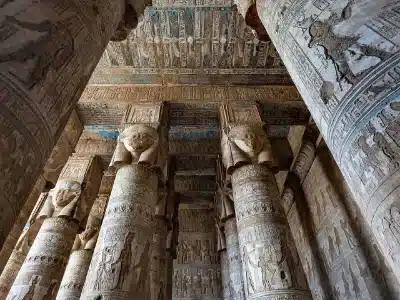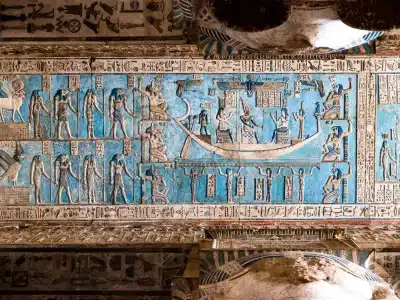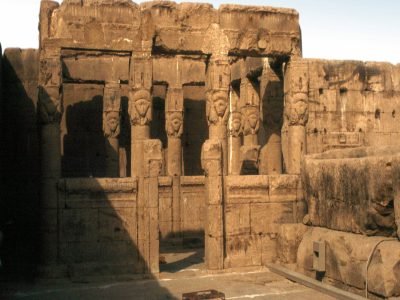Qena Dendera Temple Tour from Hurghada: 15 Reasons This Ancient Journey Is Special

A Qena Dendera Temple Tour from Hurghada is more than just a sightseeing trip—it’s a journey into the heart of ancient Egyptian spirituality and architecture.
This excursion takes you from the beaches of the Red Sea to the Nile Valley, where one of Egypt’s best-preserved temple complexes awaits. Dendera is a place where history, mythology, and art come together in breathtaking harmony.

Where Is Dendera Temple?
The Temple of Hathor at Dendera is located near Qena, about a 3.5 to 4-hour drive from Hurghada. The road trip itself is scenic, as it crosses desert landscapes and approaches the fertile Nile Valley.
Its location makes it a perfect day trip for Red Sea holidaymakers who want to blend beach relaxation with cultural exploration.
The Significance of Dendera
Unlike many temples that were damaged over the centuries, Dendera remains remarkably well-preserved. It served as a major center of worship for Hathor, the goddess of love, joy, music, and fertility.
Pilgrims from across Egypt once traveled here for festivals and ceremonies, making it one of the most important spiritual centers of its time.

Who Was Hathor?
Hathor, often depicted as a woman with cow horns and a solar disk, was one of the most beloved deities in Egypt. She symbolized motherhood, beauty, and harmony.
The temple dedicated to her reflects this spirit—it’s richly decorated with reliefs, celestial themes, and a sense of divine celebration.
Architecture of Dendera Temple
The Temple of Hathor at Dendera is one of the most architecturally complete temples in Egypt. Its massive stone columns, intricately carved ceilings, and symmetrical layout reflect both Ptolemaic and Roman influences.
The hypostyle hall, with its 24 columns adorned with Hathor-headed capitals, is particularly striking. Walking through its halls, you can almost feel the presence of ancient rituals once performed here.
The Famous Zodiac of Dendera
One of the temple’s most fascinating features is the Dendera Zodiac, a ceiling relief that represents the sky and constellations as seen by the ancient Egyptians.
Although the original zodiac relief was removed in the 19th century and now resides in the Louvre Museum in Paris, the temple still displays a detailed replica. It’s an incredible glimpse into ancient astronomy and astrology, showing how the Egyptians connected their deities with celestial bodies.
Colorful Reliefs and Hieroglyphs
Unlike many temples where colors have faded, parts of Dendera still retain vivid blues, reds, and yellows. The ceiling of the main hall, for example, shows scenes of the sky goddess Nut stretching across the heavens.
The hieroglyphs and reliefs throughout the temple tell stories of pharaohs making offerings to the gods, astronomical observations, and sacred rituals. These well-preserved artworks make Dendera a paradise for history enthusiasts and photographers.
The Underground Crypts
Dendera Temple also hides a mysterious side—its underground crypts. These small, narrow passageways once stored sacred objects and treasures used in rituals.
Inside, you’ll find unusual reliefs, including the famous “Dendera light” carvings, which some believe depict ancient technology. While scholars interpret them differently, the crypts add an air of mystery to the temple, leaving visitors fascinated




Comment (0)